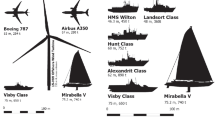Abstract
In the present work, a phenomenological plane-stress damage-mechanics-based model for textile-reinforced composites is presented and its predictive capability is evaluated by carrying out a series of experimental tests. Damage variables are introduced to describe the evolution of the damage state and, as a subsequence, the degradation of material stiffness. For calculating the nonlinear stress and strain distribution of complexly loaded composites with a textile reinforcement, a special emphasis has to be placed on the interaction between the fiber failure due to the stress in the fiber direction and the matrix failure due to the transverse and shear stresses. This demands the formulation of realistic failure criteria taking into account the microstructural material behavior and different fracture modes. The new failure criteria, like the fracture mode concepts, consider these fracture modes, as well as further fracture types, in the reinforcement plane. The failure criteria are based on equations for failure surfaces in the stress space and damage thresholds in determining the stiffness degradation of the composite. The model proposed was used to characterize the strength and the failure behavior of carbon-fiber-reinforced composites. For this purpose, several unidirectional and bidirectional tests were performed to determine the specific properties of the material. The specimens were investigated by using acoustic emission techniques and strain-controlled tension and torsion tests.
Similar content being viewed by others
REFERENCES
R. G. Cuntze A. Freund (2004) ArticleTitleThe predictive capability of failure mode concept-based strength criteria for multidirectional laminates Compos. Sci. Technol. 64 IssueID3–4 343–377
A. Matzenmiller J. Lubliner R. L. Taylor (1995) ArticleTitleA constitutive model for anisotropic damage in fiber composites Mech. Mater. 20 IssueID2 125–152
S. Baste B. Audoin (1991) ArticleTitleOn internal variables in anisotropic damage Eur. J. Mech., A/Solids 10 IssueID6 587–606
L. McCartney (1998) ArticleTitlePredicting transverse crack formation in cross-ply laminates Compos. Sci. Technol. 58 1069–1081
M. Kashtalyan C. Soutis (2000) ArticleTitleStiffness degradation in cross-ply laminates damaged by transverse cracking and splitting Composites, Pt. A 31 335–351
A. Puck H. Schürmann (1998) ArticleTitleFailure analysis of FRP laminates by means of physically based phenomenological models Compos. Sci. Technol. 58 1045–1067
A. Langkamp, Bruchmodebezogene Versagensmodelle von faser-und textilverstärten Verbundwerkstoffen mit polymeren, keramischen sowie metallischen Matrices, Dissertation, TU, Dresden(2002).
W. Hufenbach, L. Kroll, A. Langkamp, and R. Böhm, “Analysis of failure and damage of braided composite structures under biaxial loading,” in: 1st International Symposium on Mechanics of Composites, October 14, 2002, Prague (2002), pp. 61–68.
W. Hufenbach, A. Langkamp, L. Kroll, and R. Böhm, “Theoretische und experimentelle Verifizierung von Versagensund Degradationsmodellen für faserverstärkte Mehrschichtverbunde,” in: 22th International Conference “Reinforced Plastics 03,” May 20–22, 2003, Karlovy Vary (2003), pp. 28–35.
W. Hufenbach, A. Langkamp, L. Kroll, and R. Böhm, “Experimental investigation and modeling of failure and damage behaviour of multi-layered carbon fibre reinforced PEEK,” in: 14th International Conference on Composite Materials (ICCM 14), July 14–18, 2003, San Diego (2003), published on CD-ROM.
P. Offermann, H. Cebulla, and O. Diestel, “Modelling and production of fully fashioned biaxial weft knitted fabrics,” in: 1st Autex-Conference, Povoa de Varzim, Portugal (2001), pp. 263–269.
U. Köckritz, G. Franzke, T. Leopold, and P. Offermann, “Nähgewirkte Gelege aus CF-PEEK-Hybridgarn für textilverstärkte Faserverbundrotoren,” in: Verbundwerkstoffe und Werkstoffverbunde, Wiley-VCH (2001), pp. 44–48.
T. Bidlingmaier, A. Wanner, and S. Ritter, “Quantitative Analyse der Schallemission von Schädigungsprozessen in Faserverbundwerkstoffen mit duktiler Matrix,” in: 11th Colloquium on Acoustic Emission, March 6–7, 1977, Jena (1997).
L. Kroll W. Hufenbach (1995) ArticleTitleNew proof of laminate design by a physically based failure criterion Proceedings of the Tenth International Conference on Composite Materials (ICCM 10) I 715–722
E. Schmachtenberg O. Fischer (2003) ArticleTitleFaserbruch in CFK unter mehrachsiger Beanspruchung Konstruktion 9 68–72
Author information
Authors and Affiliations
Additional information
Russian translated published in Mekhanika Kompozitnykh Materialov, Vol. 40, No. 6, pp. 791–810, November–December, 2004.
Rights and permissions
About this article
Cite this article
Hufenbach, W., Böhm, R., Kroll, L. et al. Theoretical and experimental investigation of anisotropic damage in textile-reinforced composite structures. Mech Compos Mater 40, 519–532 (2004). https://doi.org/10.1007/s11029-005-0022-z
Received:
Issue Date:
DOI: https://doi.org/10.1007/s11029-005-0022-z




